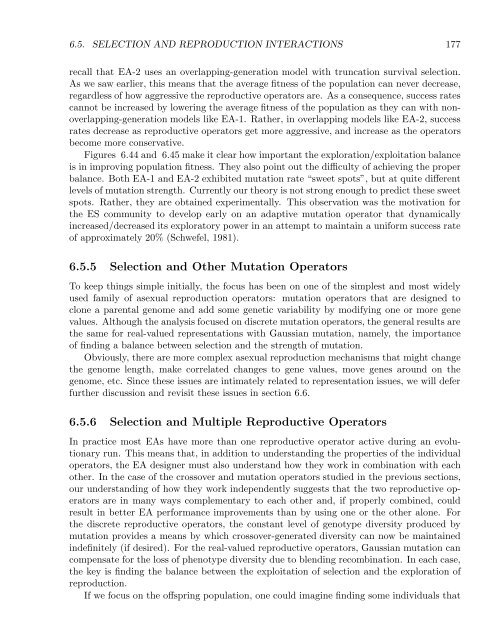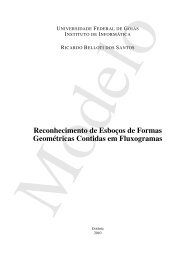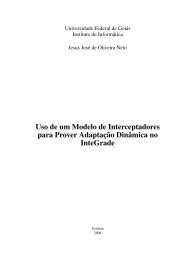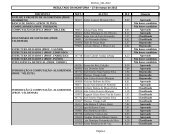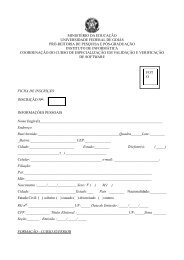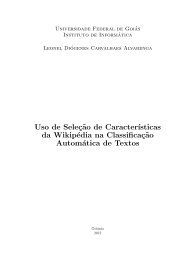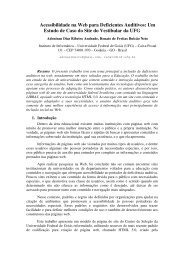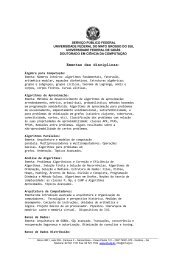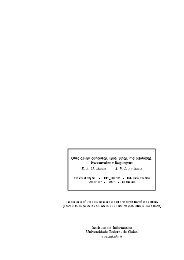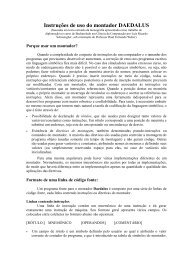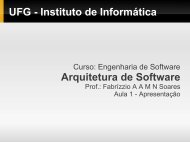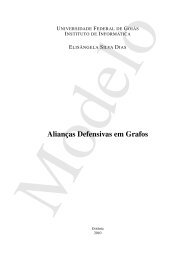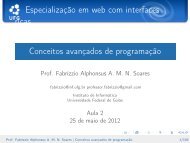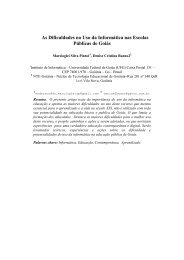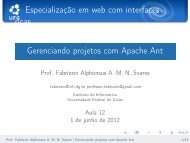Evolutionary Computation : A Unified Approach
Evolutionary Computation : A Unified Approach
Evolutionary Computation : A Unified Approach
Create successful ePaper yourself
Turn your PDF publications into a flip-book with our unique Google optimized e-Paper software.
6.5. SELECTION AND REPRODUCTION INTERACTIONS 177<br />
recall that EA-2 uses an overlapping-generation model with truncation survival selection.<br />
As we saw earlier, this means that the average fitness of the population can never decrease,<br />
regardless of how aggressive the reproductive operators are. As a consequence, success rates<br />
cannot be increased by lowering the average fitness of the population as they can with nonoverlapping-generation<br />
models like EA-1. Rather, in overlapping models like EA-2, success<br />
rates decrease as reproductive operators get more aggressive, and increase as the operators<br />
become more conservative.<br />
Figures 6.44 and 6.45 make it clear how important the exploration/exploitation balance<br />
is in improving population fitness. They also point out the difficulty of achieving the proper<br />
balance. Both EA-1 and EA-2 exhibited mutation rate “sweet spots”, but at quite different<br />
levels of mutation strength. Currently our theory is not strong enough to predict these sweet<br />
spots. Rather, they are obtained experimentally. This observation was the motivation for<br />
the ES community to develop early on an adaptive mutation operator that dynamically<br />
increased/decreased its exploratory power in an attempt to maintain a uniform success rate<br />
of approximately 20% (Schwefel, 1981).<br />
6.5.5 Selection and Other Mutation Operators<br />
To keep things simple initially, the focus has been on one of the simplest and most widely<br />
used family of asexual reproduction operators: mutation operators that are designed to<br />
clone a parental genome and add some genetic variability by modifying one or more gene<br />
values. Although the analysis focused on discrete mutation operators, the general results are<br />
the same for real-valued representations with Gaussian mutation, namely, the importance<br />
of finding a balance between selection and the strength of mutation.<br />
Obviously, there are more complex asexual reproduction mechanisms that might change<br />
the genome length, make correlated changes to gene values, move genes around on the<br />
genome, etc. Since these issues are intimately related to representation issues, we will defer<br />
further discussion and revisit these issues in section 6.6.<br />
6.5.6 Selection and Multiple Reproductive Operators<br />
In practice most EAs have more than one reproductive operator active during an evolutionary<br />
run. This means that, in addition to understanding the properties of the individual<br />
operators, the EA designer must also understand how they work in combination with each<br />
other. In the case of the crossover and mutation operators studied in the previous sections,<br />
our understanding of how they work independently suggests that the two reproductive operators<br />
are in many ways complementary to each other and, if properly combined, could<br />
result in better EA performance improvements than by using one or the other alone. For<br />
the discrete reproductive operators, the constant level of genotype diversity produced by<br />
mutation provides a means by which crossover-generated diversity can now be maintained<br />
indefinitely (if desired). For the real-valued reproductive operators, Gaussian mutation can<br />
compensate for the loss of phenotype diversity due to blending recombination. In each case,<br />
the key is finding the balance between the exploitation of selection and the exploration of<br />
reproduction.<br />
If we focus on the offspring population, one could imagine finding some individuals that


